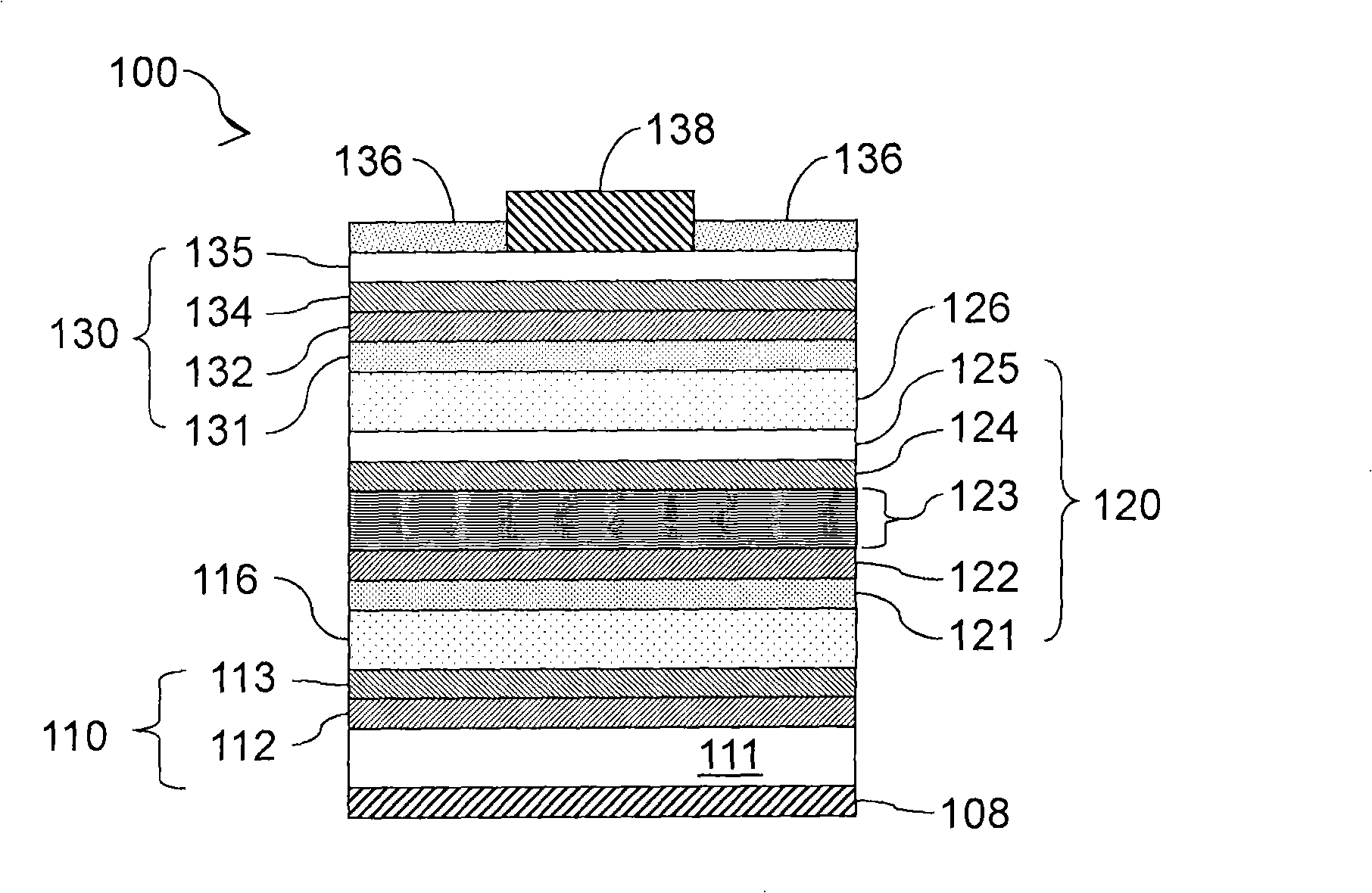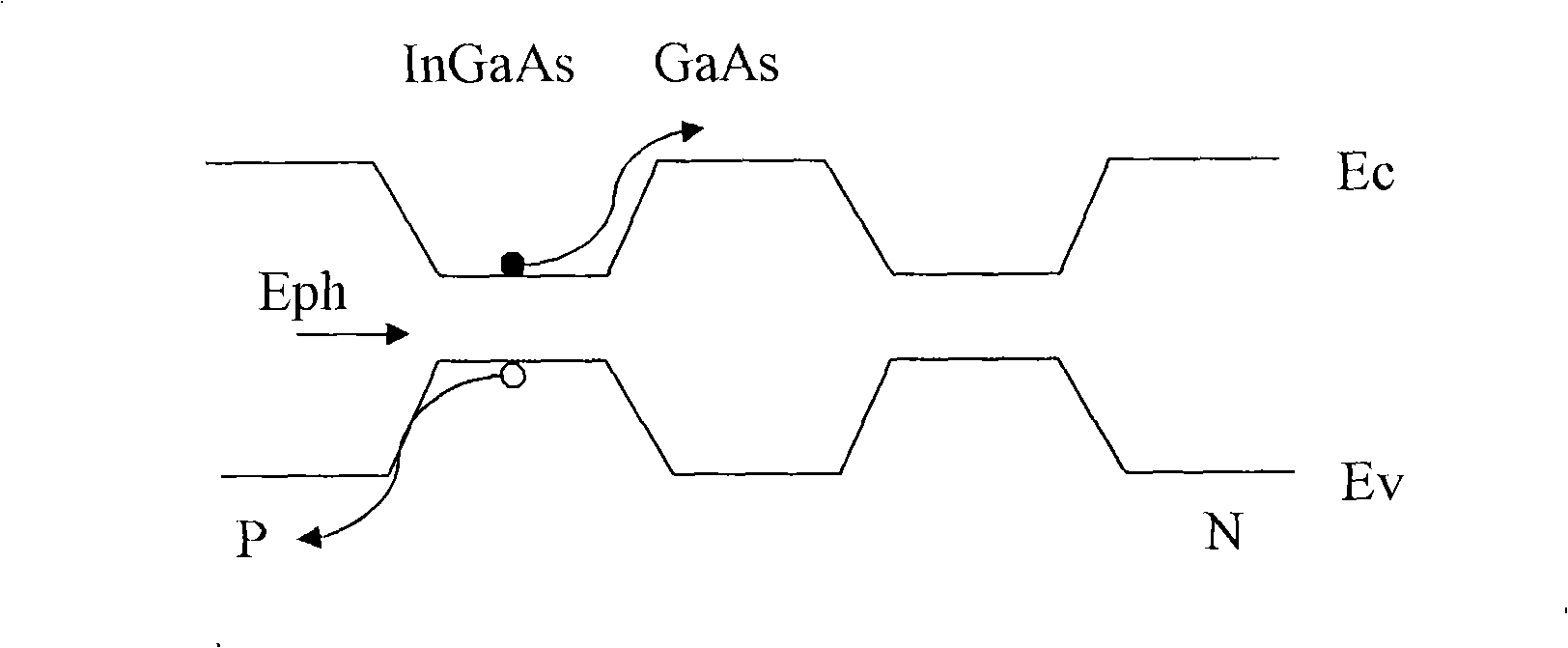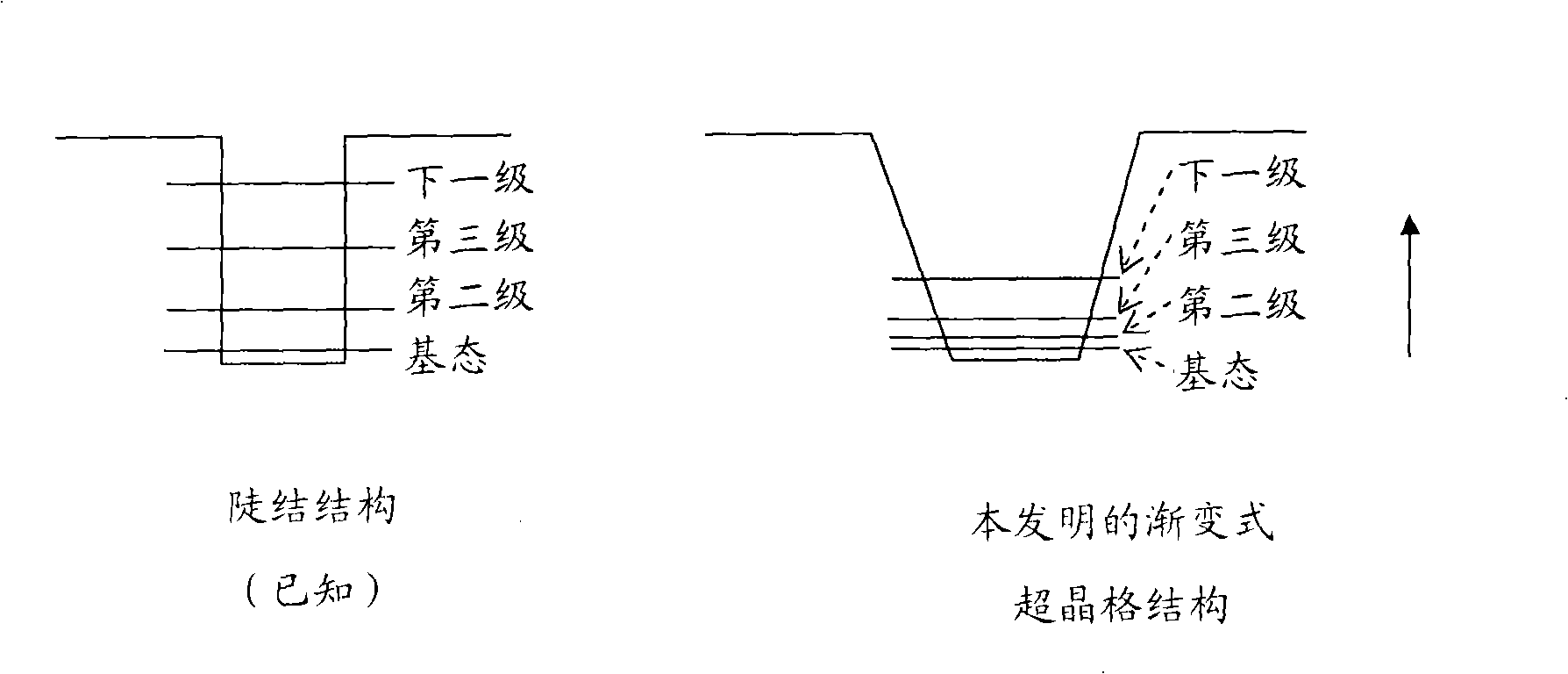Solar cell with morphing type superlattice structure
A solar cell, gradient technology, applied in the field of solar cells, can solve the problems of slow moving rate, high impurity concentration, deterioration, etc., and achieve the effects of reducing series resistance, improving response range, and improving efficiency
- Summary
- Abstract
- Description
- Claims
- Application Information
AI Technical Summary
Problems solved by technology
Method used
Image
Examples
Embodiment Construction
[0047]The invention is described more fully hereinafter with reference to the accompanying drawings, in which embodiments of the invention are shown. However, this invention may be embodied in many different forms and should not be construed as limited to the embodiments set forth herein. In the drawings, the sizes and relative sizes of layers and regions may be exaggerated for clarity.
[0048] In addition, it will be understood that when an element or layer is referred to as being "on," "connected to," or "coupled to" another element or layer, it can be directly on, or "coupled to," another element or layer. Connected or coupled to another element or layer, or there may be additional intervening elements or layers in between. Like numbers refer to like elements throughout.
[0049] Spatially relative terms such as "under", "on" and similar expressions are used herein to facilitate the description of the relationship between one element or feature in the drawings and anothe...
PUM
 Login to View More
Login to View More Abstract
Description
Claims
Application Information
 Login to View More
Login to View More - R&D
- Intellectual Property
- Life Sciences
- Materials
- Tech Scout
- Unparalleled Data Quality
- Higher Quality Content
- 60% Fewer Hallucinations
Browse by: Latest US Patents, China's latest patents, Technical Efficacy Thesaurus, Application Domain, Technology Topic, Popular Technical Reports.
© 2025 PatSnap. All rights reserved.Legal|Privacy policy|Modern Slavery Act Transparency Statement|Sitemap|About US| Contact US: help@patsnap.com



